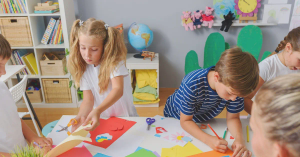The relationships between teachers and students are at the heart of a positive learning experience. When these connections are strong, they can significantly influence how students feel about learning and their overall educational success. When teachers develop positive classroom dynamics, they build an environment where students feel valued and motivated to engage with the learning process. In contrast, negative traits in teachers can lead to disengagement and a dislike for learning.
This blog discusses the characteristics that promote effective teacher-student relationships, the challenges faced in nurturing these connections, and how overcoming these obstacles can enhance the educational experience.
The Role of Teachers in Inspiring a Love for Learning
Teachers have an excellent opportunity to shape how students perceive education. Beyond delivering lessons, they can instill a sense of curiosity and joy in learning. Here are some key traits that help teachers build positive relationships with their students:
- Empathy: Empathy is essential in any teacher-student relationship. When teachers take the time to understand their students' feelings and perspectives, it creates a safe space for learning. Students who feel understood are more likely to express themselves openly and take risks in their learning.
- Approachability: An approachable teacher encourages students to seek help when needed. When students know they can ask questions or share their doubts without fear of judgment, they feel more comfortable participating in class discussions and exploring new ideas.
- Passion for Teaching: A teacher's enthusiasm for their subject can be contagious. When educators show genuine excitement about what they teach, it inspires students to develop an interest in the material. This passion helps create an environment where learning feels enjoyable rather than burdensome.
- Flexibility: Every student learns differently, and effective teachers recognize this diversity. By being flexible in their teaching methods and adapting to individual needs, teachers create an inclusive atmosphere that welcomes all learners. This approach helps students feel appreciated and encourages them to engage with the material in ways that resonate with them.
Negative Traits That Can Hinder Learning
While positive traits can enhance teacher-student relationships, negative behaviors can create barriers that push students away from learning:
- Authoritarianism: Teachers who adopt a strict or authoritarian approach may prioritize discipline over connection. This style can stifle creativity and discourage open communication, making students feel like they are simply following orders rather than actively participating in their education.
- Neglectfulness: When teachers fail to pay attention to their student's needs or interests, it can leave them feeling undervalued and disconnected from the learning process. A lack of engagement from educators can lead to feelings of isolation among students.
- Inflexibility: Teachers who are unwilling to adapt their teaching methods may alienate students who struggle with traditional approaches. Inflexibility can lead to frustration for those who need different strategies to succeed, ultimately causing them to disengage from learning altogether.
The Stages of Learning and Teacher Influence
The journey of learning is often marked by distinct stages, each requiring different types of support from teachers:
- Initial Engagement: At this stage, students are introduced to new concepts. A supportive teacher can spark curiosity through engaging activities that relate to students' interests.
- Exploration: As students dive deeper into subjects, they may face challenges or confusion. Teachers who provide constructive feedback and encouragement help them overcome obstacles and build resilience.
- Mastery: During this stage, students begin to demonstrate understanding and competence in their skills. Positive reinforcement from teachers fosters confidence and motivates further exploration.
- Reflection: The final stage involves reflecting on what has been learned and how it applies to real-life situations. Teachers who encourage this reflective practice help solidify knowledge and promote lifelong learning.
Overcoming Challenges in Teacher-Student Relationships
Building strong relationships between educators and students is not always easy; various challenges can arise along the way. Factors such as large class sizes, diverse student needs, and external pressures on educators can complicate efforts to connect with each student individually. However, there are ways for educators to strengthen these relationships:
- Professional Development: Ongoing training focused on relationship-building techniques can equip teachers with the skills needed to form positive classroom dynamics.
- Open Communication: Establishing regular channels for feedback—such as surveys or informal check-ins—can help teachers better understand their students' needs.
- Community Building: Creating opportunities for collaboration among students fosters a sense of belonging that extends beyond individual relationships with teachers.
Conclusion
The impact of teacher-student relationships on learning is profound; these connections are fundamental to educational success and positive classroom dynamics.
Understanding the stages of learning and addressing the challenges inherent in building these relationships is essential for creating an environment where all students feel valued and motivated to learn. Ultimately, nurturing strong teacher-student relationships is key to academic achievement and encouraging a love of learning that extends far beyond the classroom walls.







